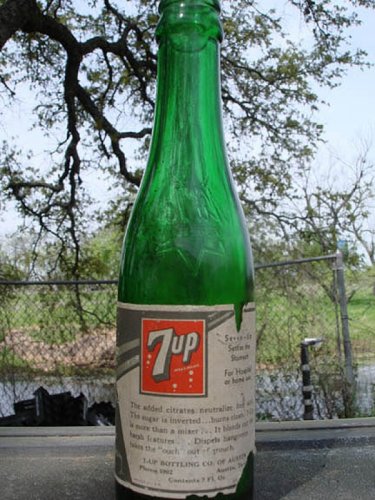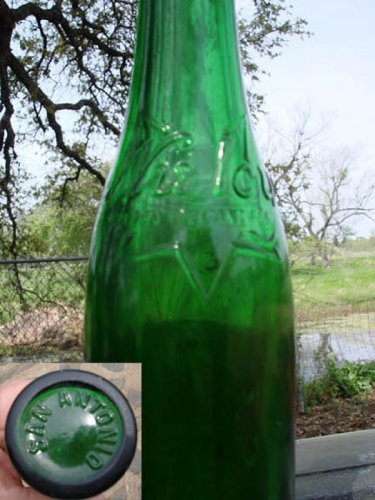Hello,
I thought I had a 7up bottle with a paper label but the bottle is a green Nu Icy bottle.
The bottle is embossed on the other side of the paper label on the neck with a 5 pointed star and the words Nu Icy flavors you cant forget.
On the bottom of the bottle it has MIN. CONT. 6 FLU.OZ. 283E ROOT 30
Paper Label at bottom says: 7-UP BOTTLING CO. OF AUSTIN Phone 5902 Austin, Texas Content 7 FL. Oz
Any ideas as to age or value?
Thank you. Buddy

I thought I had a 7up bottle with a paper label but the bottle is a green Nu Icy bottle.
The bottle is embossed on the other side of the paper label on the neck with a 5 pointed star and the words Nu Icy flavors you cant forget.
On the bottom of the bottle it has MIN. CONT. 6 FLU.OZ. 283E ROOT 30
Paper Label at bottom says: 7-UP BOTTLING CO. OF AUSTIN Phone 5902 Austin, Texas Content 7 FL. Oz
Any ideas as to age or value?
Thank you. Buddy




